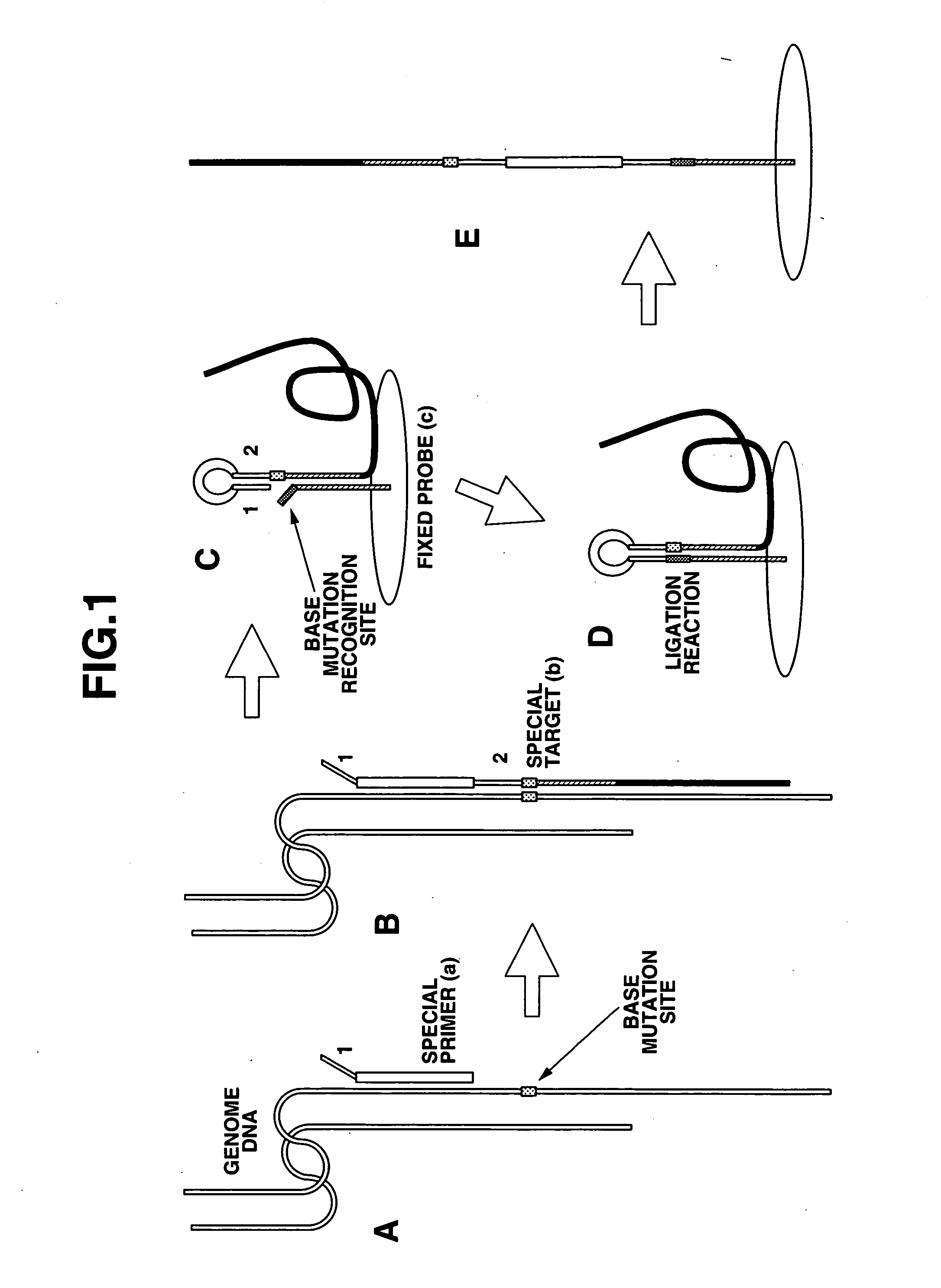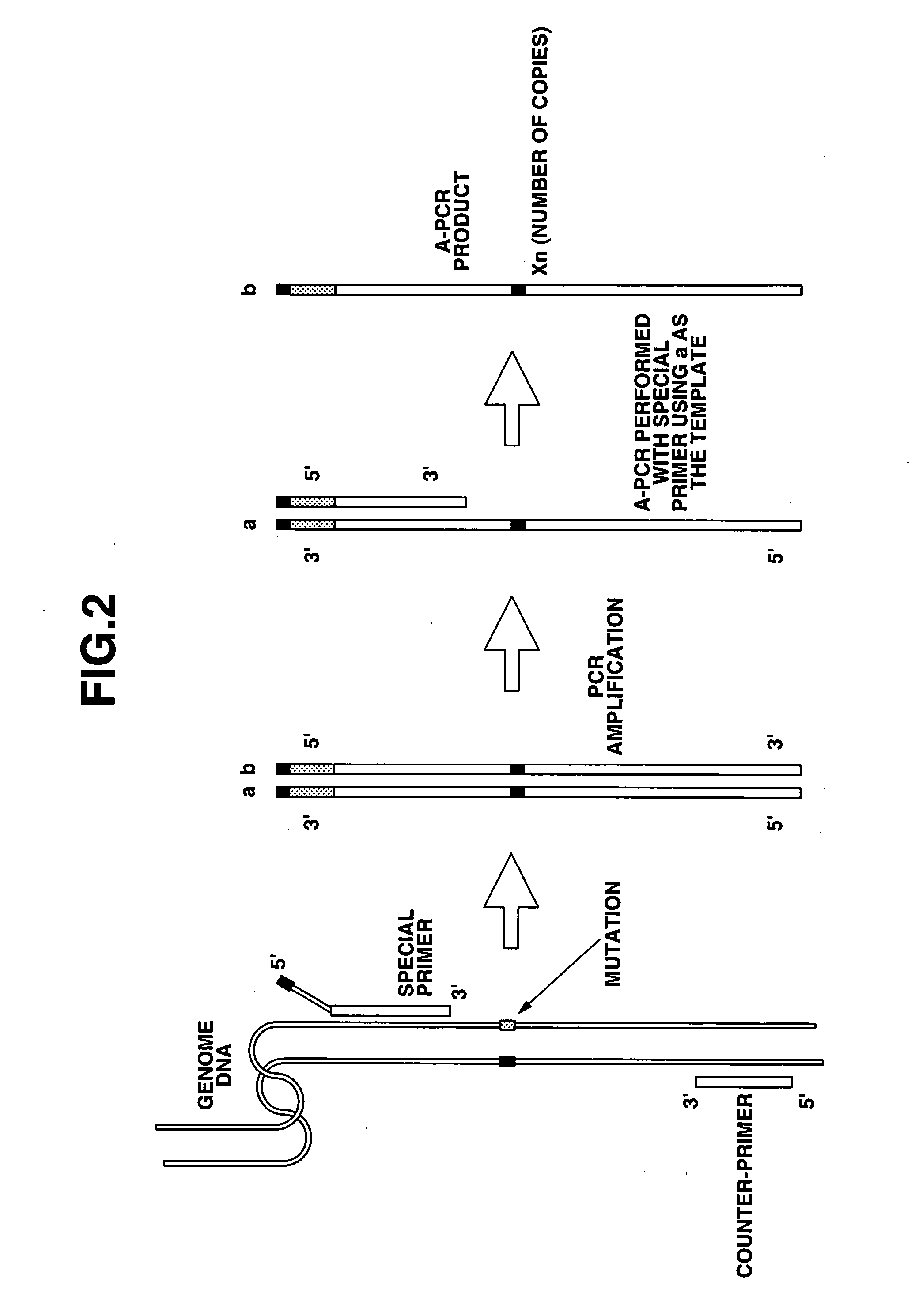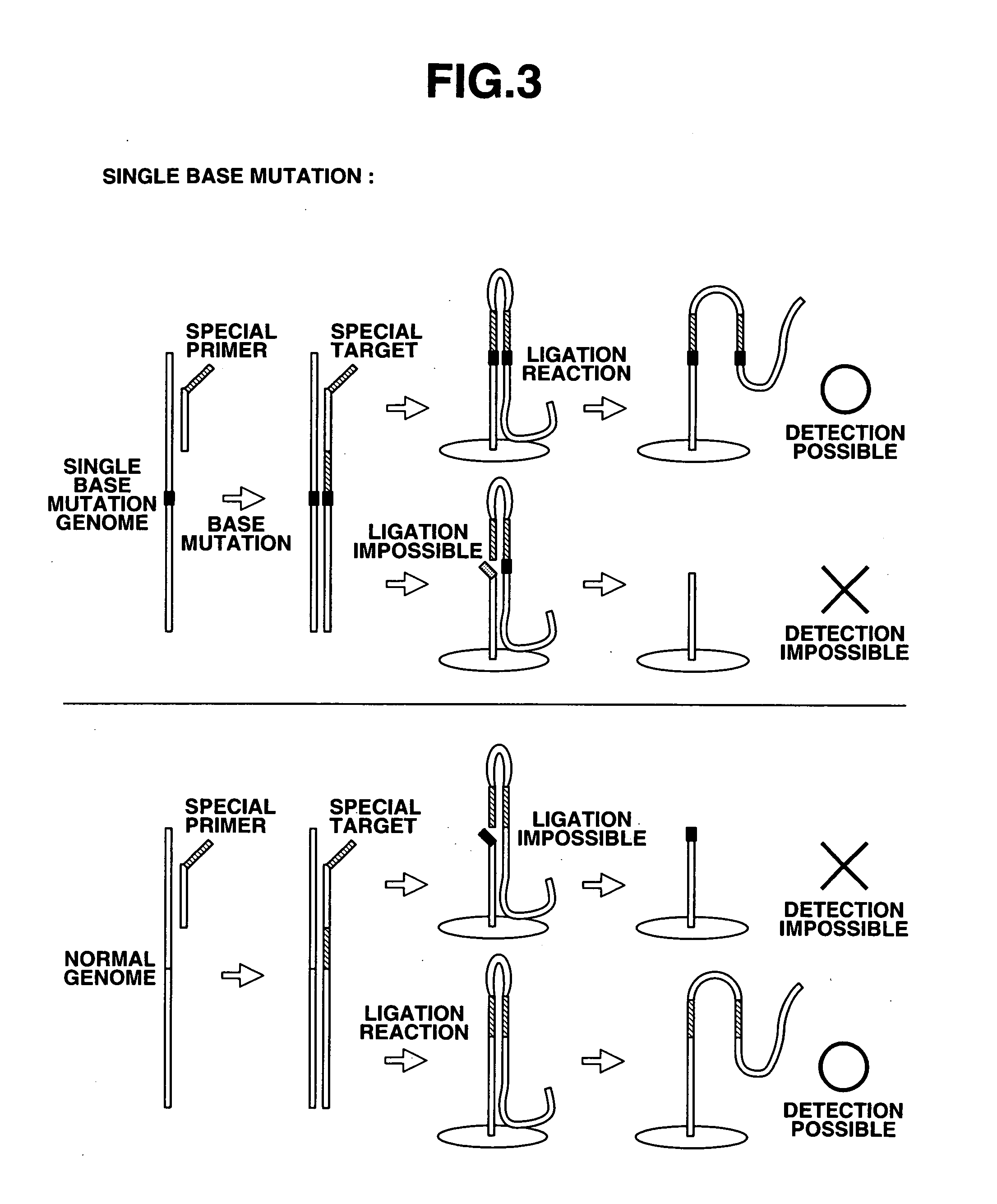Method of detecting base mutation
a base mutation and detection method technology, applied in the field of detecting base mutations, can solve the problems of not being able to identify the location and type of the mutation nucleotide, sscp is non-qunatitative analysis, and it is difficult to analyze many samples at the same tim
- Summary
- Abstract
- Description
- Claims
- Application Information
AI Technical Summary
Problems solved by technology
Method used
Image
Examples
example 1
(Detection of a Single Nucleotide Mutation)
[0135] (1) Using gold array electrodes (24 electrodes divided into groups A-F of four each), 1 μL of the normal probe described below with a concentration of 10 pmol / μL was placed on the electrode pin ends of groups A-C, 1 μL of the single nucleotide mutation probe described below with the same concentration was placed on the electrode pin ends of groups D-F, and fixing carried out.
[0136] Normal Probe:
i) Structure:HS-(CH2)6-gaattagctgtatcgtcaaggcactcttgcctacgccacc[0137] ii) Oligonucletoide: Sequence length 40 nucleotides [0138] iii) Electrode fixing part: thiol group [0139] iv) Linker part: alkane chain with carbon number 6 [0140] v) Has normal nucleotide at the 3′ end (C)
[0141] Single Nucleotide Mutation Probe:
i) Structure:HS-(CH2)6-gaattagctgtatcgtcaaggcactcttgcctacgccacg[0142] ii) Oligonucleotide: sequence length 40 nucleotides [0143] iii) Electrode fixing part: thiol group [0144] iv) Linker part: alkane chain with carbon number ...
example 2
(Simultaneous Detection of Different Types of Mutations)
[0170] (1) Operations for fixing of the probes were the same as in Example 1. Namely, an array of gold electrodes (15 electrodes divided into groups A-C of 5 electrodes each) was used, with 1 μL of the normal probe described below applied to the pin ends of electrodes A at a concentration of 10 pmol / μL, 1 μL of the single nucleotide deletion probe described below applied to electrodes B at the same concentration, and 1 μL of the single nucleotide mutation probe described below applied to electrodes C at the same concentration, and fixing performed.
(Fixed Probes)
Normal Probe: the Same Oligo Probe Used in Example 1
Single Nucleotide Mutation Probe: the Same Oligo Probe Used in Example 1
[0171] Single Nucleotide Deletion Probe:
i) Structure;HS-(CH2)6-tgaattagctgtatcgtcaaggcactcttgcctacgccac[0172] ii) Oligonucleotide: sequence length 40 nucleotides [0173] iii) Electrode fixing part: thiol group [0174] iv) Linker part: alkan...
example 3
[0184] (1) The operation for fixing the probe was the same as in Example 1. Namely, gold array electrodes (15 electrodes in groups A-C of 5 electrodes each) were used, and 1 μL of a 10 pmol / μL single nucleotide mutation probe (the same oligo single nucleotide mutation probe used in Example 1) was applied to the pin tips of all the A-C electrodes, and fixing performed.
[0185] (2) The array electrodes were dipped and washed in a measurement electrolytic buffer (mixed buffer of potassium acetate and potassium chloride) containing no electrochemical reagents. This served to remove the non-specifically bound DNA.
[0186] (3) DPV response following probe fixing was measured (i1).
[0187] (4) A reaction solution was prepared for purposes of hybridization. The reaction solution contained final concentrations of 1×T4 DNA ligase buffer, only those salts required for hybridization, and 10 pmol / μL of each special target (normal, mixture of normal and single nucleotide...
PUM
| Property | Measurement | Unit |
|---|---|---|
| Tm | aaaaa | aaaaa |
| Tm | aaaaa | aaaaa |
| Tm | aaaaa | aaaaa |
Abstract
Description
Claims
Application Information
 Login to View More
Login to View More - R&D
- Intellectual Property
- Life Sciences
- Materials
- Tech Scout
- Unparalleled Data Quality
- Higher Quality Content
- 60% Fewer Hallucinations
Browse by: Latest US Patents, China's latest patents, Technical Efficacy Thesaurus, Application Domain, Technology Topic, Popular Technical Reports.
© 2025 PatSnap. All rights reserved.Legal|Privacy policy|Modern Slavery Act Transparency Statement|Sitemap|About US| Contact US: help@patsnap.com



